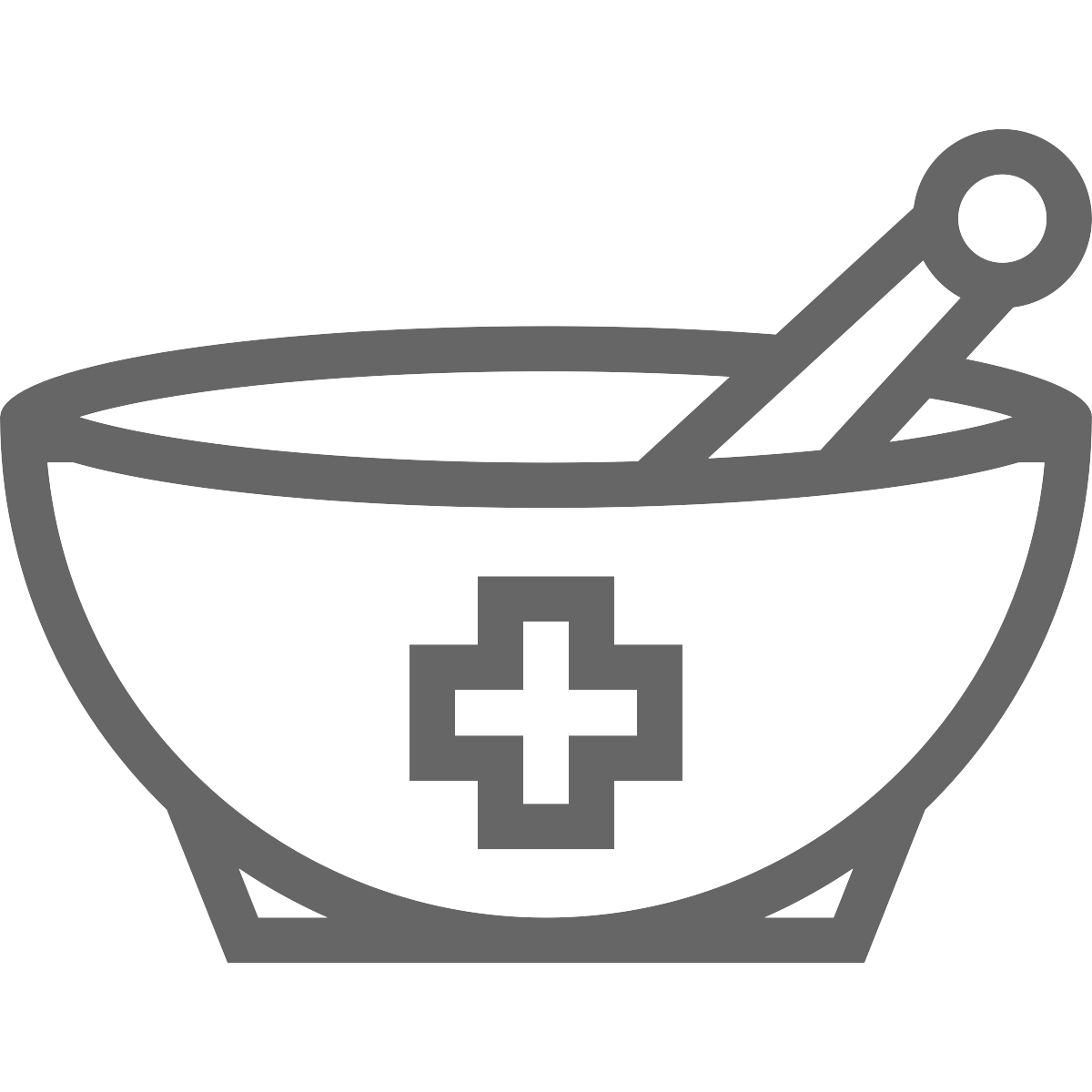Prostate Cancer: Pre-Treatment
The Choice of Treatment for Prostate Cancer is Based on a Shared Decision Between You and Your Urologist
The choice of treatment for prostate cancer depends on factors related to the severity and extent of the cancer, as well as, your preferences related to the benefits and downsides (or side effects) of each of the treatments. Talk to your doctor and your family as you consider what treatment option is best for you.
Making a Shared Decision
The TRUENTH app, created by the Movember Foundation, allows you to answer questions based on your preferences and receive tailored education about treatment options that can help prepare you for a conversation with your doctor about treatment options that are best suited for you.
The Michigan Urological Surgery Improvement Collaborative (MUSIC) is currently piloting the use of this app in some of our practices. If your urologist in Michigan enrolls you in the Personal Patient Profile-Prostate (or “P3P”), then we ask that you access this tool via the direct e-mail invitation or in the urologist’s clinic. Otherwise, you can click the link below to try the shared decision-making tool.
Download Personal Patient Profile-Prostate (P3P) Brochure
Please find a video briefly on treatment options available for men with localized prostate cancer. To learn more details about each treatment option, select the appropriate tab below.
Much of this information was provided by the Urology Care Foundation.
 Active Surveillance
Active Surveillance
Active surveillance does not actively treat prostate cancer and includes active monitoring of the disease for patients with very low or low-risk prostate cancer. Regular monitoring occurs every 6 to 12 months and often includes repeat biopsies or imaging, PSA blood test, and DRE. Active Surveillance may be a good option for men with no cancer symptoms, slow-growing prostate cancer, older, or who have other serious health issues. The goal of surveillance is to allow men to keep their quality of life when the cancer is growing slowly. If things change, men may choose to transition to a treatment to more aggressively treat the cancer.
Benefit:
- No sexual, urinary, or bowel side effects like other treatments have
- Costs less than more active treatment
- Very few treatment-related risks or side effects
Risk:
- Potential for repeat biopsies
- Frequent follow-ups with doctors for blood, rectal, and other tests
- Cancer could grow and spread between follow-up visits, this could make the cancer harder to treat over time
Much of this information was provided by the Urology Care Foundation.
 Radical Prostatectomy
Radical Prostatectomy
Radical prostatectomy is a treatment choice that involves surgically removing the prostate from the body. Surgery may be a good option for men with: stages T1 or T2 prostate cancer (cancer confined to the prostate), men healthy enough to handle a major operation and live 10 years or more, your personal wishes as some men may want their cancer completely remove.
Benefit:
- If your cancer is confined to the prostate (has not spread outside the prostate) the chance of cure with surgery alone at 10 years is more than 90%
- Can help your doctor know if you need more treatment
Risk:
- Potential for surgery-related risks, including bleeding or infection
- Not everyone has the same side effects for the same amount of time. How serious your side effects may be is based on your age, health, and the type of surgery you select. See below, for side effects you may deal with
Side Effect:
- Erectile Dysfunction
- Urinary Incontinence
- Change in penis length
- Bleeding
- Blood Clot
- Changes in orgasm
- Infertility
Information on surgery for prostate cancer
How will I feel if I have my prostate surgically removed?
Every patient’s journey is a little different, but some of the common side effects following this surgery are leaking of urine and problems with erections.
To understand your journey and help measure how your recovery is progressing, your urologist may ask you to provide information about your urinary and sexual symptoms both before and at several time points after surgery. This program is called the Patient Reported Outcomes, or PRO, program. Here is a brochure with more information: Download Patient Reported Outcomes (PRO) Brochure
What does sexual recovery after prostate cancer surgery look like?
Although each patient’s postoperative journey is individual, sexuality is more than just having and maintaining erections. TrueNTH Sexual Recovery Intervention is an online, tailored interactive program to support men and their partners on their journey toward sexual recovery after prostate cancer treatment. It was developed by funding from the Movember Foundation and is designed to help patients understand key points in the journey and provide ideas for how to work on sexual recovery alone or with a partner. Register to find out more about what you can do to address this common issue.
The TrueNTH Sexual Recovery Program can help several ways:
- Supports couples in staying sexually connected before, during, and after prostate cancer treatment
- Encourages rehabilitation to improve sexual function
- Improves communication about sexual issues to promote satisfying sexual relationships
 Radiation Therapy
Radiation Therapy
Radiation therapy uses high-energy beams to kill or slow the growth of cancer cells. Radiation may be a good option for men whose: cancer is only in the prostate, cancer has spread outside of the prostate and is using hormone therapyhad their prostate removed but are at risk for it returning, prostate cancer has returned, or who has advanced prostate cancer and wish to reduce symptoms.
Benefit:
- No surgery
- Less invasive
- Effective for early-stage prostate cancer
Risk:
- Main side effect is incontinence and bowel problems (additional side effects are listed below)
- Fatigue/Tiredness
Side Effect:
- Incontinence
- Bowel Problems
- Erectile Dysfunction
- If radiation and hormone therapy are used together the following side effects can occur:
- Loss of sex drive, hot flashes, weight gain, feeling tired, decreased bone thickness, and depression
- Once hormone therapy is stopped, they most often go away
Types of Radiation Therapy
Radiation is either given externally (outside the body) or internally (inside the body). You may get help from both types. The type offered will depend on the stage and grade of cancer, your total health and life expectancy, and goals for treatment.
External Beam Radiation Therapy (EBRT):
Aimed beam of radiation sent from outside to the prostate, delivered in daily doses for a certain number of weeks.
Standard EBRT:
- Uses protons (x-rays)
- Photon based external based x-rays may damage nearby healthy tissue; causing side effects
- May be able to use an alternative newer machine to allow surrounding healthy tissue to be protected
Proton Beam Therapy:
- Uses a machine called a cyclotron to send high energy protons deeper into body tissue
- Does not go beyond the tumor; nearby tissue is not changed; fewer side effects
Stereotactic Body Radiation Therapy:
- Large doses of proton radiation to exact areas, like the prostate, with advanced imaging
- The course of treatment is a few days
Internal Radiation Therapy:
Radioactive material placed directly into the prostate using a hollow needle.
LDR Brachytherapy:
- A thin needle is used to insert radioactive “seeds” (size of a rice grain) into the prostate
- These “seeds” send out radiation, killing prostate cancer cells nearby. They are left in the prostate even after treatment
HDR Brachytherapy:
- Radiation placed into your prostate using a slightly larger hollow needs to insert a thin catheter
- The catheter remains in until treatment is complete, removed once treatment is complete
Download an informational document on radiation therapy
 Chemotherapy:
Chemotherapy:
Chemotherapy uses drugs to kill cancer cells and is given either intravenously (with a needle in the vein) or by mouth over several months. It is often used with other treatments. Chemotherapy may be a good option for men with: advanced stage of prostate cancer, cancer that has spread outside of the prostate, advanced prostate cancer that no longer responds to hormone therapy.
Benefit:
- Kills rapidly growing prostate cancer cells
Risk:
- Can also kill healthy cells
- Side effects depend on your health, the drug, dose, and how long treatment lasts (see a list of some potential side effects below)
Side Effect:
- Fatigue/Tired
- Nausea and Vomiting
- Hair loss
- Change in taste and touch(feeling numb)
- Increased chance of infections
Most of these side effects can be managed, and lessen once treatment ends.
Download an informational document on chemotherapy
 Immunotherapy:
Immunotherapy:
Immunotherapy is designed to boost the body’s immune system to fight cancer cells to slow cancer cell growth in advanced prostate cancer. While the potential for immunotherapy is exciting, clear successful results have not yet been shown.
Much of this information was provided by the Urology Care Foundation.
 Hormone Therapy (Androgen Deprivation Therapy – ADT):
Hormone Therapy (Androgen Deprivation Therapy – ADT):
Androgen deprivation therapy (ADT) uses drugs to block or lower testosterone as well as other male sex hormones that fuel cancer to grow. It can help slow down the cancer and ease symptoms, but it cannot cure the cancer. Hormone therapy may be a good candidate for men with: advanced cancer, cancer that has come back after treatment, pursuing radiation therapy. Over time, prostate cancer can “learn” how to outsmart this treatment. If it does, other treatments may be needed to manage your cancer.
Benefit:
- Cancer can shrink or stop growing
Risk:
- Has been linked to heart disease and increased risk of heart attack
- May lead to diabetes
- For a list of side effects, please see below
Side Effect:
- Hot flashes
- Anemia
- Decreased mental capacity
- Fatigue/Tiredness
- Osteoporosis (loss of bone strength)
- Swollen and tender breasts
- Loss of sex drive and erectile dysfunction
Download an informational document on hormone therapy
 Watchful Waiting
Watchful Waiting
Watchful waiting is a less involved system of monitoring the cancer without treating it. Unlike active surveillance, it does not involve regular biopsies, imaging blood tests, or DREs . Watchful Waiting may be a good option for men who: do not want therapy, cannot have therapy, have other medical conditions that would be affected by more aggressive treatment.
Benefit:
- No treatment-related risks, complications, or side effects
- Low cost
Risk:
- Cancer could grow and spread between follow-up visits, this could make the cancer harder to treat over time
My doctor recommended pelvic floor physical therapy, where can I find a location near me?
If you are pursuing surgery for your prostate cancer treatment, your doctor may have recommended you start doing kegel exercises. Some doctors may suggest beginning kegel exercises before while others may suggest beginning kegel exercises after surgery. Please talk to your doctor about when to start your kegel exercises.
What are Kegel exercises?
Kegel exercises help strengthen muscles, called pelvic floor muscles, that are involved with urinary control.
Your doctor may recommend a pelvic floor physical therapist to help improve urinary leakage. Pelvic floor physical therapists, can help you identify the correct muscles to perform kegel exercises and create an individualized plan to aid in your recovery. To find a pelvic floor physical therapist near you, please click on area closest to you below:
Finding the right pelvic floor physical therapist should be a decision between you and your doctor. Your doctor may recommend a pelvic floor therapist not on this list. Please talk with your doctor to find out which pelvic floor physical therapist may be best for you and your care.
Southeast Michigan
West Michigan
Flint Michigan
Northwest Michigan
Northeast Michigan
Mid-Michigan
Upper Peninsula
Much of this information was provided by the Urology Care Foundation.
The following questions may be helpful to ask your doctor to better understand your diagnosis and available treatment options that are best suited for your prostate cancer care.
Diagnosis:
- What is my Gleason score, the grade and the stage of my cancer?
- How aggressive is this cancer? Is it likely that my cancer will spread? (Has it spread?)
- If the cancer has spread, where?
- Do I need more tests now?
- What type of schedule should I be on to track changes with this cancer?
Treatment:
- What are my treatment choices (including surveillance, localized therapy or systemic therapy)?
- What are the advantages and disadvantages of each?
- What are the time considerations and costs for each?
- What is your experience with each option?
- Would I have to go somewhere special to get treatment?
- Why do you recommend one type of therapy over another?
- What are the chances for each treatment to manage my cancer and for how long?
- What are the chances of complications from each treatment?
- What kinds of complications are likely from each?
- When are they likely to occur?
- What if I choose no treatment (watchful waiting or active surveillance)?
- How often will I need to take follow-up tests?
- If I use hormone therapy, what type do you suggest and why?
- How would we manage potential side effects from hormone therapy?
- What are the chances that my cancer will return after treatment – and if it does, what options for treatment do I have then?
- Can we develop a short and long-term plan for my care?
- Is there someone you would recommend for another opinion?
Side Effects & Recovery:
- What are the potential side effects of the treatment you recommend: both immediately and in the long term?
- How can I manage side effects?
- How would we manage potential urinary dysfunction and for how long?
- How would we manage potential erectile dysfunction and for how long?
- What other side effects should I consider?
- How much recovery time will be required after surgery?
- Will I need to take time off from work or other activities to manage treatment and treatment side effects?

